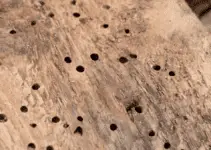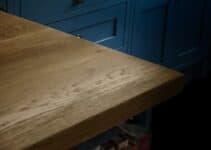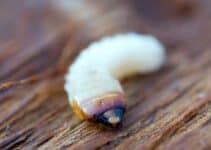Considering it’s an almost universal household product, it’s fair to ask, can I treat woodworm with vinegar? After all, it could be a non-toxic alternative to harsher methods out there.
But can you treat woodworm with vinegar? You can treat woodworm with vinegar, but it won’t actively kill the bugs. Instead, it’ll force them out of the wood, meaning you then need to kill them in a different way.
However, if you’re concerned about chemicals like white spirit, it’s a viable option.
In this article, we’ll dig into greater detail about how to use vinegar to treat woodworm, along with situations where it might be the most practical option.
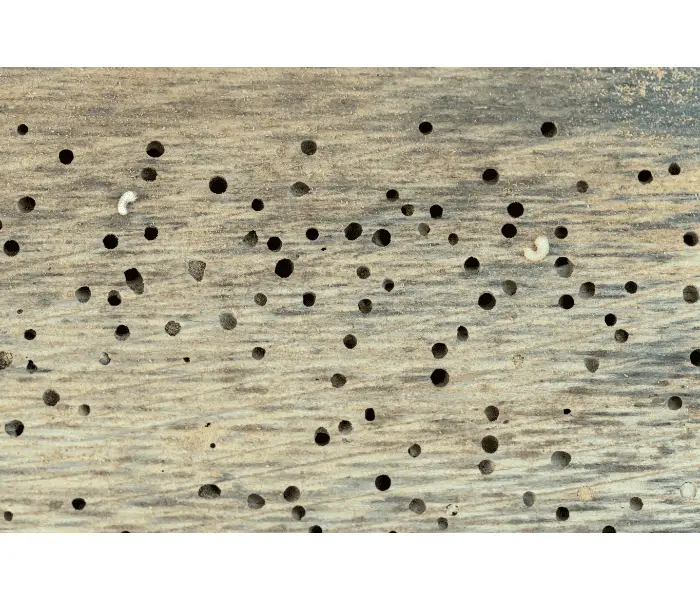
Treating Woodworm with Vinegar
Vinegar is a way of removing woodworm from a piece of wood, but it won’t actually kill the bugs. As such, you’ll need to find some other method for this, such as using steam.
Of course, chemical bug killers will do the job, but they’re not an option for everyone.
But how does vinegar actually help to treat woodworm infestations? The acidity of vinegar isn’t pleasant for the bugs, so they’ll leave the piece of wood to get away from it.
If there’s an active infestation, you should see them leave through the small holes they’ve created in the wood.
You can theoretically use vinegar to treat woodworm in any piece of wood, but there are some practical considerations:
· It won’t work great on structural wood because you’ll need decent coverage.
· As such, it’s a more viable option for furniture or wooden pieces like a piano.
· Vinegar isn’t strong enough to strip varnish off wooden items but it will strip wax, so bear this in mind.
· As mentioned, it won’t kill the woodworm, so you’ll need to find another way to do this.
So, while it might not completely do the job, similar to using lavender, it’s certainly a start for removing a woodworm infestation if you don’t happen to have any other options.
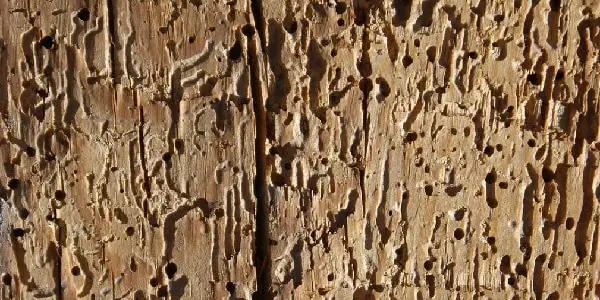
How to Treat Woodworm with Vinegar
The steps for treating woodworm with vinegar are pretty simple. You’ll need the following things:
· White vinegar (any vinegar is fine, but products like malt, cider or wine vinegar could stain your wooden item)
· A spray bottle
· A vacuum cleaner
· Some way of killing the woodworm
Here are the steps:
1. Start by removing any soft furnishings from the area, such as rugs, cushions, etc.
2. Vacuum the area, paying special attention to cracks between floorboards. This is to remove any woodworms before you start.
3. Mix the vinegar in a 1:1 solution with water.
4. Add to the spray bottle.
5. Spray the area liberally with the vinegar solution. You don’t need it to be soaking wet, as you can always apply more.
6. If you see the woodworm larvae exiting the item, use the vacuum cleaner to get rid of them. If not, spray more vinegar and repeat until you get results.
It can be helpful to check if the woodworm infestation is still active. However, you won’t lose much by spraying vinegar, so it’s not necessary.
The clearest sign of an active woodworm infestation is the appearance of fresh sawdust around the holes.
Pros and Cons of Using Vinegar to Treat Woodworm
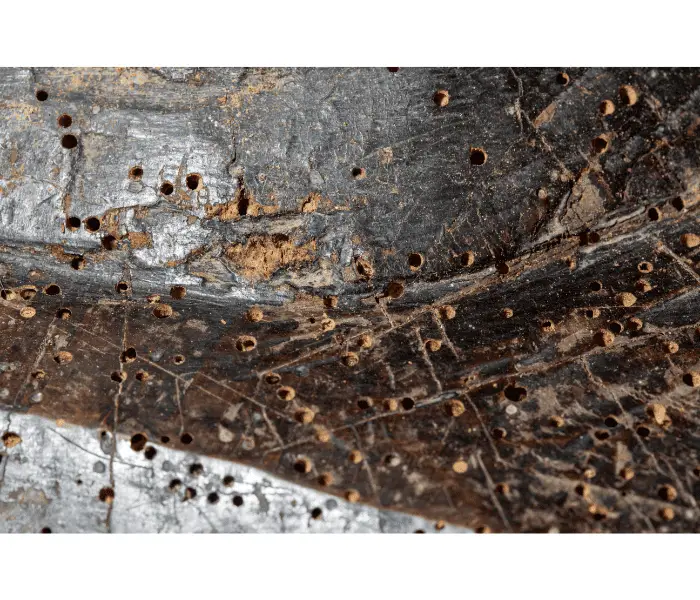
If you’re considering using vinegar to treat a woodworm infestation, make sure you check over these pros and cons first.
Doing so should clarify whether it’s the most sensible option for you.
Pros
1. It’s accessible
One of the most obvious benefits is that vinegar is a fairly common household liquid, meaning you’ll almost always have access to it. This is rarely the case for specialist chemicalwoodworm treatment, so it at least means you can have a go at treating the issue before breaking out the harsher options.
2. It’s non-toxic
This is a big plus if you’ve got kids or dogs. That said, it’s obviously better for your health, too. Vinegar is a completely safe product to use around the home, hence why it’s such a popular cleaning tool.
The only real danger to using it around kids and pets is accidentally spraying it in their eyes!
3. It’s inexpensive
Vinegar is incredibly cheap. You can buy litres of it for very little money, meaning there’s no real harm in giving it a go. Plus, if it doesn’t work, you’ve got something for cleaning your windows and mirrors!
4. It’s eco-friendly
In much the same way that it’s non-toxic to people and animals, it’s also better for the environment than harsh chemicals. This applies to both its production and disposal, as it’s a weak acid that’ll go unnoticed if tipped down a drain.
Similarly, this applies to the wooden item (like a picture frame) you’re spraying it on – the chances of it doing damage are incredibly low.
Cons
1. It won’t kill the woodworm
This is worth repeating again: vinegar won’t kill woodworm. It’s non-toxic, but this unfortunately also applies to the pest you’re trying to remove.
As such, you’ll need to find another way to actually dispose of the larvae once they’ve left the wood.
2. It smells
There’s no denying that vinegar smells, although it’s not the most unpleasant odour. This is especially true when you compare it to chemical pest killers.
3. It might damage the wood
Vinegar might be weak but it’s still an acid. Prolonged use can tarnish wood stains, but this is unlikely to happen when trying to treat woodworm, especially if you’ve watered it down.
The main things to watch for are it stripping wax off polished furniture and leaving watermarks on the wood. Anything else is more of a long-term issue and so is unlikely to happen after spraying wood a few times.
Does Vinegar Kill Woodworm?
Does vinegar kill woodworm? No it doesn’t.
So, is vinegar the most practical treatment for getting rid of woodworm? Definitely not.
Considering one of the main goals of any pest control job is often to kill the creatures, it fails at actively managing an infestation.
However, it’s a useful short-term solution if you want an alternative to breaking out the harsh chemicals or calling a pest controller. By all means, give it a go, but don’t expect amazing results.

